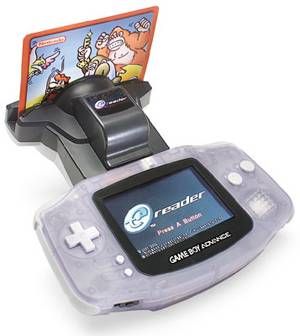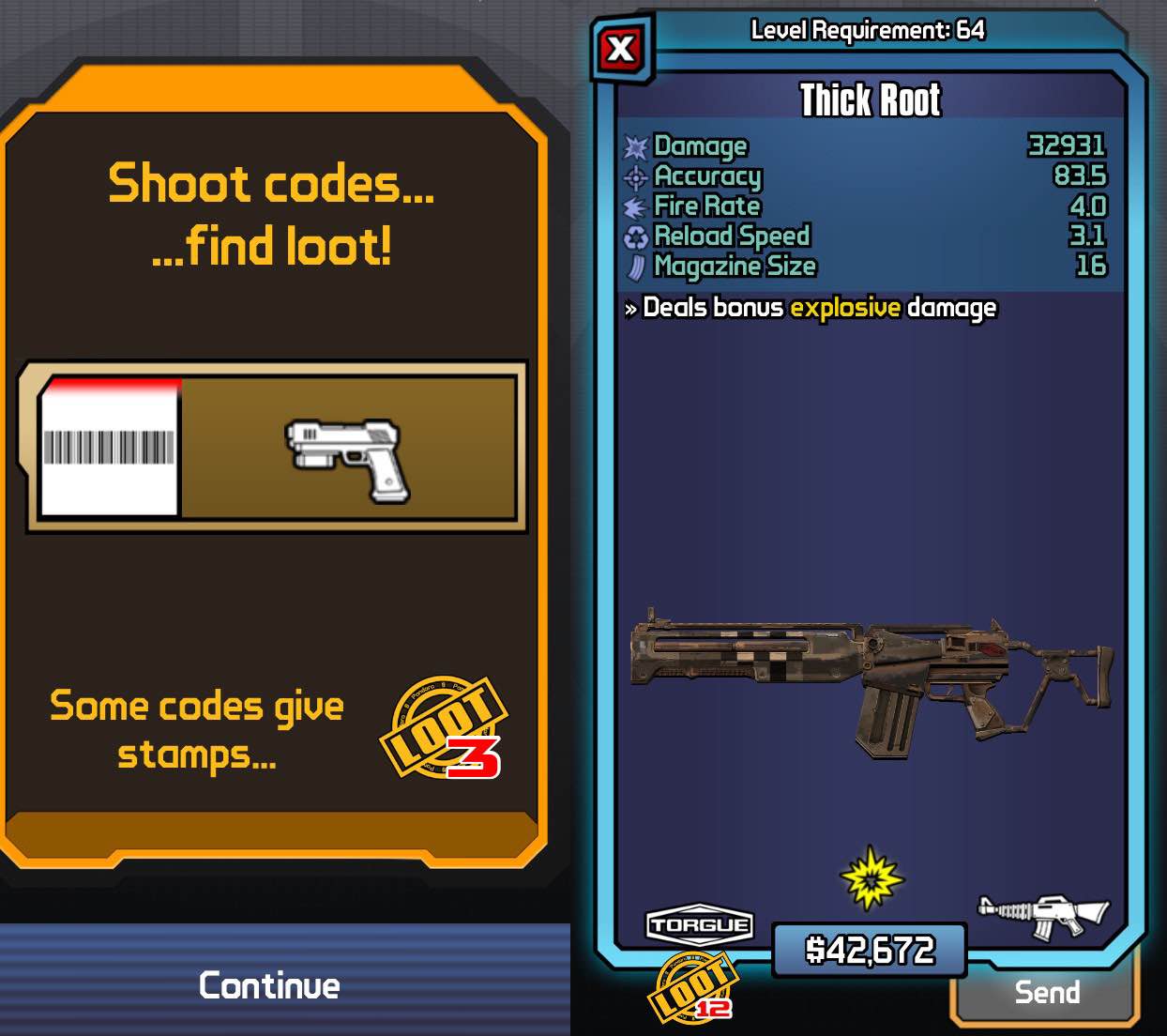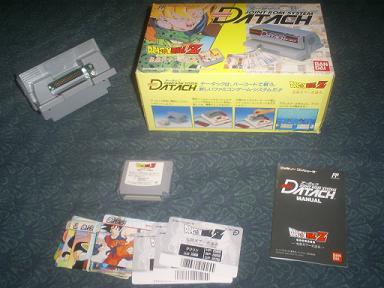Scan and Deliver: A Brief History Of Barcodes In Mainstream Video Games
 By Matthew Stolpe
By Matthew Stolpe
Barcode games made their debut on home video game consoles in the early ‘90s with two platforms: Datach Joint ROM System and Barcode Battler II (the first Barcode Battler was a standalone portable system). Datach and Barcode Battler II didn’t function too differently from one another; the barcode scanner hardware networked with consoles Nintendo’s Famicom and Super Famicom respectively, and players would swipe collectible barcode cards through them to unlock game content.
While both systems saw their degree of success in Japan, the next big push to incorporate barcodes in video games would come a decade later with the Nintendo e-Reader. This peripheral hardware interfaced with the Game Boy Advance (GBA), Nintendo’s wildly successful portable game console. The e-Reader was essentially a portable LED scanner. The device fit in the GBA’s cartridge slot and read a special barcode technology called dot codes.
Dot codes actually contained the data necessary to play games for the e-Reader, so when players swiped dot code cards, they were effectively downloading the content to the e-Reader’s hard drive, rather than merely unlocking content that was there to begin with. This process meant that often times players would need multiple cards to play just one e-Reader game; while some content only needed one or two codes, heftier games like Excitebike required five cards, or about ten codes.
The e-Reader never quite took off in North America the way it did in Japan, perhaps because it was often difficult and convoluted to use. Nintendo didn’t just create games to be stored on the e-Reader, it also used the e-Reader to update older Game Boy Advance games with new content. Since the e-Reader occupied the GBA’s cartridge slot, players needed a second GBA with the intended game connected via a link cable in order to scan in new content. Production of the peripheral was discontinued in North America in 2004, but in Japan the device continued to be produced up until the GBA was discontinued in 2006.
Nintendo would later learn to implement barcodes in less brazen ways. In recent releases, the developer has created meaningful, yet ancillary gameplay experiences around scanning barcodes. The gameplay mechanic became less about unlocking content in games, and more about sharing content with other players. This shift is perhaps most notable in how the developer incorporates QR codes in 2013’s Animal Crossing: New Leaf for Nintendo 3DS. 
Animal Crossing, a series of small town community life simulator games, gives players immense customization options to play around with. Using a pixel art interface, players can customize nearly every aspect of their avatar’s life, from the carpet on the floor of their house to the designs on their clothes. In older Animal Crossing games, players couldn’t share their designs with their friends; a pattern made in the original Animal Crossing was stuck to the save file it was made on.
This all changed when New Leaf introduced a sewing machine that creates QR codes for user-generated designs. To receive a new design, players can simply use the 3DS’ camera to scan in the designs – no third party software or peripherals needed. What’s more, players can share these codes with ostensibly anyone who has the game. Since the addition of QR codes, fans have created robust online forums and blogs where they share codes and commission designs.
Another recent Nintendo game uses QR codes in a similar manner to New Leaf. When players aren’t hunting down exotic monsters to capture in Pokémon Omega Ruby and Pokémon Alpha Sapphire, they can make secret bases – domiciles found in the game’s world where players can play minigames, battle other Pokémon trainers, and decorate their surroundings. Players can share their handiwork with other Pokémon trainers around the world using QR codes generated in game. When players scan a QR code generated by Omega Ruby or Alpha Sapphire, they can visit its creator’s secret base and play multiplayer-only game modes.
Other developers are still using barcodes as a means of unlocking content. While the popular first person shooter Borderlands 2 doesn’t feature barcodes or QR codes, its LootTheWorld companion app does. Players with smart phones can use the app to scan barcodes and QR codes to unlock rare guns, shields, grenades and more and send them to their game via the Internet. Much like how New Leaf’s QR functionality created a new community for its game, fans have created sites cataloguing the barcodes with the best loot. Despite the app being over a year old, these communities are still active.
With the release of the Microsoft’s Xbox One and Sony’s PlayStation 4 in late 2013, video games are now in their eighth generation of console hardware. It’s unlikely that the barcode games of older generations or a peripheral in the vein of the e-Reader will pop up over the course of this new generation; precedent holds that international markets don’t respond well to games that revolve solely around them. However, barcodes aren’t out of the picture entirely. It’s likely that as this generation progresses, barcodes and QR codes will continue to evolve as a means of sharing user-generated content.
Matthew Stolpe is a freelance writer and editor with an interest in the video game, entertainment, and technology industries. He has previously written for publications such as Game Informer and WFSU-FM, Florida Public Radio. He graduated from Florida State University with a Bachelor of Arts in English with a focus in Editing, Writing, and Media, which is a fancy way of saying he studied a mixture of journalism, communications, and media studies. You can contact him via email at
Additional sources:
http://www.pocketgamer.co.uk/r/Multiformat/Handheld+Classics/feature.asp?c=12051

